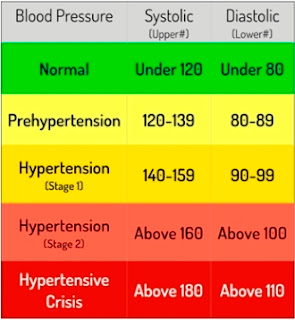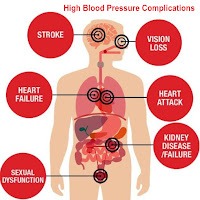The heart pumps blood around the body through the blood vessels. Blood pressure is the amount of force exerted on the artery walls by the pumping blood. High blood pressure (hypertension) means the blood is pumping with more force than normal through arteries. This added stress upon the arteries could possibly accelerate the distribution of arteries with fatty plaques (atherosclerosis).
Other risk factors for atherosclerosis include cigarette smoking and high blood cholesterol. Atherosclerosis contributes too many heart illnesses, such as heart attack and stroke. Hypertension is a common disorder of the circulatory system, affecting around one in seven people.
Hypertension usually produces no symptoms. This means most people don’t even realize they have it. Experts recommend that everyone should have their blood pressure checked regularly.
When the heart contracts the blood inside the left ventricle, is forced into the aorta and arteries. The blood then enters small vessels with muscular walls, called arterioles. The tone within the muscular walls of the arterioles determines how relaxed or constricted they are. If narrowed, they resist flow.
Reduced flow of blood is detected in the brain, the kidneys and elsewhere. Nerve reflexes are stimulated and hormones are then produced. The heart is induced to beat more forcefully so that the blood pressure is maintained at a higher level, to overcome the restricted flow through the arterioles.
The achievement of good flow (now at high pressure) eases possible problems for function of the brain and kidneys. These adjustments happen normally. There are some people that the adjustments become fixed and high blood pressure persists. These people have developed hypertension.


No comments:
Post a Comment